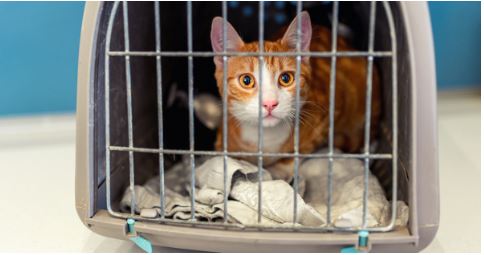As animal lovers, we all want to ensure the well-being of our furry, feathered, or scaly companions. Whether you’re a pet owner transporting your beloved dog or cat, or a business responsible for the movement of livestock or exotic animals, the safe and humane transport of animals is of paramount importance. In this blog post, we’ll explore the key considerations and best practices to keep in mind when transporting animals, so you can give your four-legged (or winged, or finned) friends the care and attention they deserve.
Understanding the Unique Needs of Different Animals
Before embarking on any animal transport journey, it’s crucial to understand the specific needs and requirements of the species you’ll be transporting. After all, the needs of a goldfish are vastly different from those of a horse or a parrot.
For example, reptiles and amphibians may require specialized temperature and humidity control to maintain their optimal environment. Birds, on the other hand, need ample ventilation and space to prevent stress and potential injuries. Large animals, such as livestock, have unique considerations around their size, strength, and the need for appropriate caging or trailers. Familiarizing yourself with the unique needs of the animals in your care is the first step towards ensuring a safe and comfortable transport experience.
Selecting the Right Mode of Transport
Once you’ve identified the specific requirements of the animals, it’s time to choose the most appropriate mode of transport. This decision will depend on factors such as the distance, the number of animals, and the mode of travel (ground, air, or sea).
For short-distance ground transport, a well-ventilated, climate-controlled vehicle equipped with secure cages or kennels may suffice. For longer journeys or air travel, specialized animal transport services with climate-controlled and pressurized cargo holds can provide a safer and more comfortable experience for your furry (or scaly) friends.
Regardless of the mode of transport, it’s essential to ensure that the vehicle or carrier is designed and maintained specifically for animal transport, with features like temperature regulation, air circulation, and access to food and water during the journey.
Prioritizing Animal Welfare and Comfort
The cornerstone of any successful animal transport endeavor is prioritizing the welfare and comfort of the animals in your care. This means providing a stress-free environment, minimizing the duration of the journey, and ensuring that the animals have access to necessary resources throughout the trip.
Some key considerations for maintaining animal welfare during transport include:
- Proper Caging and Restraints: Ensure that the animals are secured in appropriately sized and ventilated cages or kennels, with enough space to stand, turn around, and lie down comfortably.
- Food, Water, and Rest Stops: Provide regular access to food and water, and plan for rest stops to allow the animals to stretch their legs and relieve themselves.
- Monitoring and Supervision: Continuously monitor the animals for signs of distress, and have a plan in place to address any emergencies or issues that may arise during the journey.
- Minimizing Noise and Disruptions: Keep the transport environment as calm and quiet as possible, to reduce stress and anxiety for the animals.
- Specialized Considerations: For certain species, such as exotic or sensitive animals, consult with veterinary professionals to ensure their specific needs are met during transport.
By prioritizing animal welfare and comfort, you can ensure that your furry (or scaly) friends arrive at their destination safe, healthy, and ready to continue their journey.
Regulatory Compliance and Industry Best Practices
Depending on the type of animals you’re transporting and the jurisdiction you’re operating in, there may be specific regulations and guidelines that you’ll need to adhere to. These can include requirements for health certificates, import/export documentation, and compliance with animal welfare laws.
It’s crucial to research and understand the relevant regulations in your area, as well as any industry-specific best practices for animal transport. Staying up-to-date with the latest developments and guidelines can help you navigate the regulatory landscape and ensure that your animal transport operations are safe, legal, and humane.
Partnering with Experienced Professionals
For many pet owners and businesses, the prospect of transporting animals can be daunting. Fortunately, there are experienced professionals and service providers who specialize in animal transport and can lend their expertise to ensure a seamless and worry-free experience.
Whether it’s a pet relocation service, a livestock transport company, or a specialized animal moving service, partnering with these professionals can give you peace of mind, knowing that your furry (or feathered, or scaly) friends are in good hands. They’ll be able to guide you through the process, handle the logistics, and provide the necessary resources to guarantee a safe and comfortable journey for your animals.
Conclusion
Transporting animals, whether as a pet owner or a business, is a responsibility that requires careful planning, attention to detail, and a deep commitment to animal welfare. By understanding the unique needs of different species, selecting the right mode of transport, prioritizing animal comfort, and partnering with experienced professionals, you can ensure that your animal transport endeavors are safe, humane, and in compliance with all relevant regulations.
Remember, our animal companions depend on us to provide them with the care and attention they deserve. By embracing these best practices for animal transport, you can make a meaningful difference in the lives of the animals entrusted to your care.

